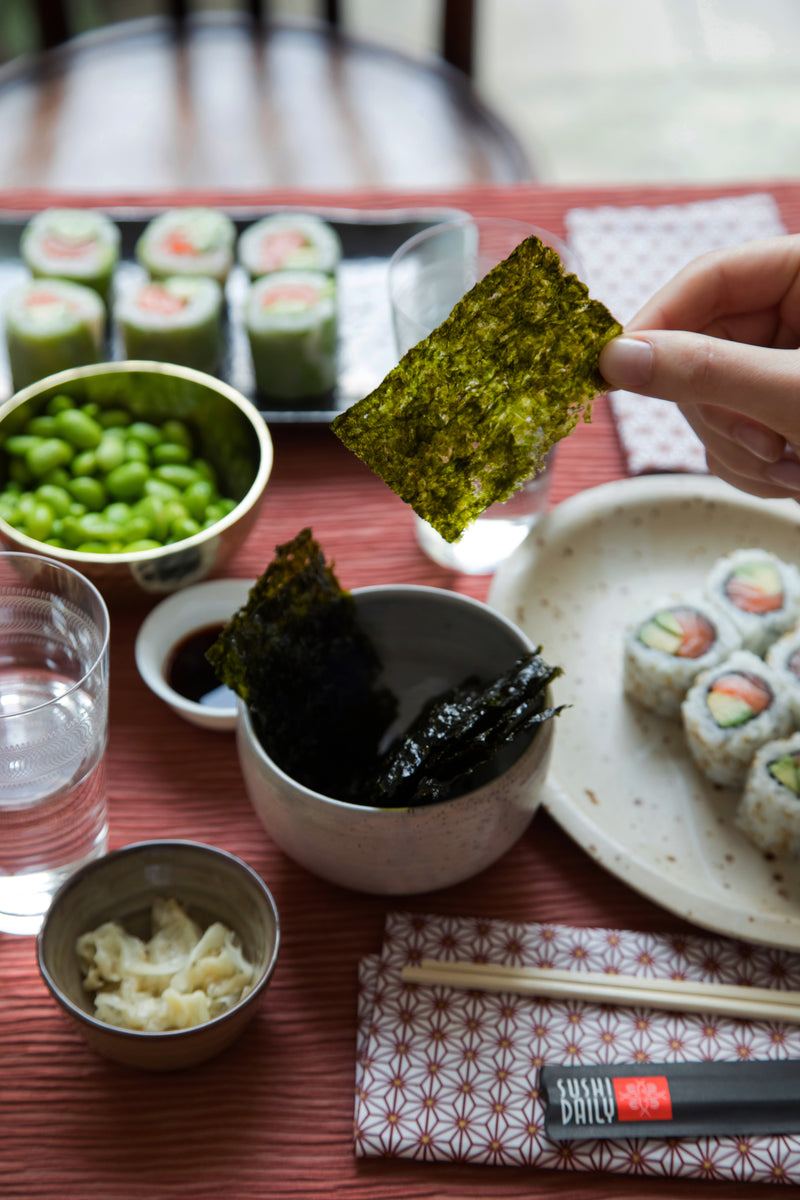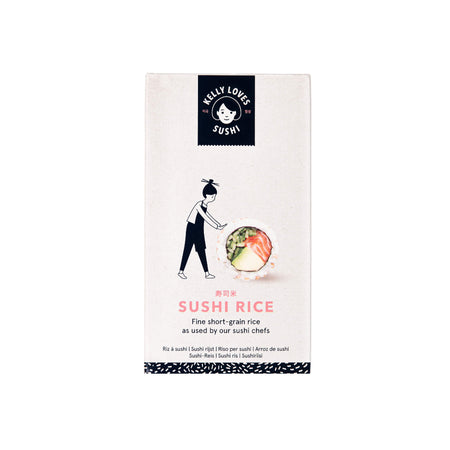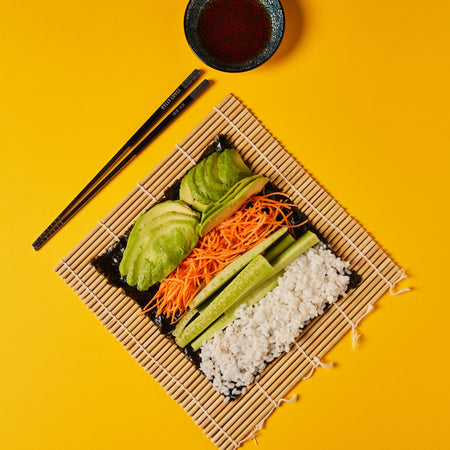What is nori and what does it taste like?

If you’ve enjoyed eating and making sushi, you’ll be thankful for the firm dark exterior which keeps all the delicious ingredients together in a neat parcel. Nori-wrapped maki rolls are one of the more familiar types of sushi, seen in our sushi for beginners guide, and probably the first type of sushi you’ll make at home.
What is nori?
Let’s begin by taking a closer look at nori. Nori is a type of seaweed, an edible red algae that grows on rocks in shallow sea. In the wild, nori seaweed is red with folded blades that can appear red, pink, brown or dark green in colour. Nori is made from a species of the red algae genus pyropia. The seaweed used most frequently to produce nori is pyropia yezoensis. It’s produced in huge quantities in countries such as Korea, Japan and China, which makes it one of the most economically important marine crops in the world.
Once the seaweed has been harvested it is dried into nori sheets. The drying process can make it look black or brown. The pressed, paper-like nori sheets are then usually cut into squares to make it easy to use when rolling up sushi. To use nori to wrap sushi, you need to rehydrate and soften it first by soaking the sheets for a few minutes in cold water.
How is nori produced?
Seaweed farms situated along coasts have plantations of nets just below the surface of the water. The nets are then seeded with pyropia. The algae grows fast from seed: the fresh nori is ready to harvest after approximately 45 days. It’s fascinating to see the grids of nets with bountiful crops of seaweed hanging from the ropes. The farmers traditionally reach the nets in boats, harvesting the top layers of nori and then putting the nets back. By just taking the top layer, there’ll be more fresh nori to harvest in around ten days’ time. Machinery does the harvesting today.
After the nori has been harvested, it’s cut up, pulped and the water is pressed out as the nori is smoothed into thin sheets. The sheets are then dried on a rack for hours or days, depending on the thickness of the nori sheets and the room temperature. Again, modern times have streamlined this process with technology and today nori sheets can be dried in minutes.
Are there different types of nori?
There are different qualities of nori (graded) and there are also different ways of serving nori. Let’s look at the grading for quality first. The grading is all about the appearance of the nori, rather than the taste. There are eight nori harvests per year. The first harvest happens when the water is at the lowest temperature; nori harvested at this time is considered to be the best. The last harvest is considered to be the lowest quality. The actual grading of the nori by the farmers is a complex process. There are a number of different factors:
- Colour / shininess — the best nori is a deep green with a lustre to it. The darker the colour, the better.
- Thickness / density — hold a sheet up to the light to check consistency, you want it to be dense.
- The harvest number — from 1 to 8, with 1 being the highest quality.
- Amount of holes — the fewer holes in a sheet of nori, the better.
Each individual sushi product at Kelly Loves is hand-selected by Kelly herself for its authenticity and excellent quality, including all the Kelly Loves nori products. Kelly always honours her promise, striving to make the best sushi in the world, using only the finest sushi ingredients. This gives you the opportunity to use restaurant-quality nori at home — we use the same ingredients in our Sushi Daily kiosks.
As well as different qualities of nori, there are different ways of eating nori:
Nori sheets. You can use nori sheets to roll sushi, but they can also be used to make seaweed rice balls. Simply cut the nori sheet into small pieces or shred it in a food processor and mix with rice, soy sauce, and sesame oil until incorporated.
Nori snacks. In Korea, seaweed is an essential element in the local cuisine. Nori (gim) is the most common seaweed to eat in Korea. For an authentic taste of Korea, try Kelly Loves high-quality nori thins which are roasted, lightly salted and bursting with flavour. You can pop them into your bag for a convenient healthy snack on the move, or you can enjoy them at home.
Shredded nori. You can serve shredded nori alongside rice or mixed with sunflower or sesame seeds.
Nori strips. Nori can also be cut into neat strips and added to ramen, salads, soups and omelettes.
Nori as a side dish. In Korea, sheets of nori the size of playing cards are served as a side dish. Koreans roll small portions of rice into the sheets of nori as they eat.
Crumbly nori, roasted and seasoned. Known in Korea as ‘gim-jaban’, it can be eaten with a spoon or mixed into your rice.
Nori as a topping for dishes. The perfect crunchy topping for rice dishes such as the Korean bibimbap or noodle dishes.
What does nori taste like?
If you have never eaten sushi before, you might be wondering what nori tastes like. High-quality nori has a very delicate umami taste. This allows it to complement the subtle flavours of sushi rice and fish. Koreans like to toast their nori. Yaki nori (toasted seaweed) has a slightly stronger flavour and can be used to roll sushi or sprinkled over fish.
Nori tastes especially delicious when dipped in soy sauce mixed with wasabi paste. For a healthy snack on the move, our wasabi crispy nori snacks are mouth-wateringingly addictive, but thankfully guilt-free — low calorie and still packed with the health benefits of nori.
Does nori taste like fish?
There shouldn’t be any fish flavour there, it’s all about the umami. But as seaweed comes from the sea, many people describe nori as having a ‘sea-like’ salty taste.
Is nori sweet or salty?
Nori is both sweet and salty! As nori is harvested from the sea, it has a naturally salty-sweet taste — the taste of the sea.
We feel that nori is a bit of an unsung hero, so much more than just a sushi wrapper; it’s packed with vitamins and minerals and deliciously moreish. Nori can be eaten alone or can enhance dishes and is a great way to add some low-calorie, plant-based protein to a meal. As nori is used in Korea to elevate so many diverse dishes, we hope we have inspired you to try some different ways of enjoying it.









